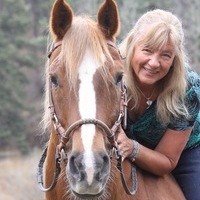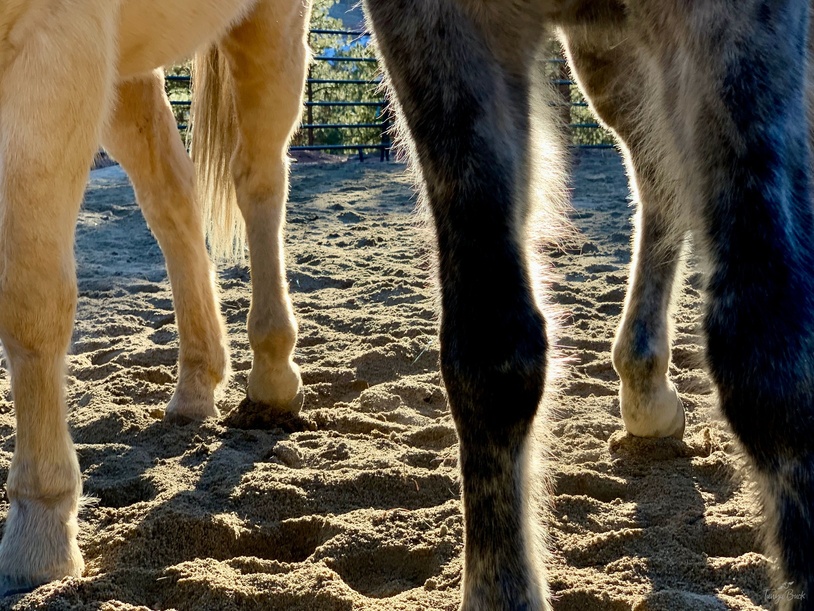
The Most Popular Horse Breeds Of 2019
Equestrian Advice & Guides General Equestrian
Build your business profile for FREE and expose your services to thousands of potential clients!
Create my profile now!
Do you consider your horse nervous, fidgety and anxious and just want him to relax? Do you think the reason is his breed or his personality? Want to change that aspect of your horse’s personality, but don’t know how?
As a trainer and an author, I get asked questions about horses and how best to teach something in particular. Sometimes, the desired training is complex and advanced, but more often, the questions are about basic things: How to lead, how to load, how to back a horse up, how to make a horse stand or move or walk or trot. Other times the ask is concerning when to blanket, what to feed, how to make a horse gain weight and what supplements are needed.
The latest inquiry is from a person I don’t know regarding a horse I’ve never met. The person is asking how to make his horse stand still, how to get him to not weave while stalled, and what supplement will lessen the horse’s anxiety. He tells me the horse is an eight-year-old thoroughbred-quarter cross and says the horse is anxious, but not always. Says the horse just won’t settle, and refuses to stand still, and he’s tried everything. He now wants a feed-through solution and wants to know if CBD oil might be a viable option.
The original note to me stated that people had told him he was cruel and unjust for having the horse in a stall except for four to six hours a day. He came across as angry that folks told him to pasture his horse and that the option of doing so was not possible. He rides the horse two or three times a week for an hour, and believes that’s sufficient. He said that the horse simply needed to get used to this situation and believed that doping him down with calming supplements was the best and only answer.
I admit that I shook my head and frowned as I thought about all the things I’d offer first. Like getting the horse the motion he and all horses thrive on, adding a friend to make his existence more meaningful. I’d suggest changing the horse’s environment to increasing exercise without increasing demands or anxiety. I considered the man’s worries and adamant belief that pasture time was not going to happen, period. And then I thought about what he’d already done, specifically to get his horse to stand while tied and tacked up.
Considering the list of things others would say to do and knowing that there were better solutions, I begin writing to the guy. I won’t copy everything I sent to him and besides, our conversations were long, detailed and eventually verbal, so I couldn’t do so even if I wanted. But I began with the things written above: a new barn with a pasture, a herd mate or five and more riding time. I suggested a shared lease with someone else if all else failed and he remained boarded and living in a stall.
If you know me at all, even if only through social media, you know I prefer to help the horse, not make the horse do any specific task. I like to have fun and I like my horses to have fun as they learn. I always preferred Art and Recess over Math and History because they’re more fun and I figure horses like to have a good time, too. I also like the horse and the human to be safe in all that they do and encounter. And I believe that safety is needed in a holistic manner; the body, the psyche and the mind must be kept whole and engaged to get anything done in the easiest and safest way possible.
So back to this man and his “anxious and nervous” horse not wanting to stand. I wrote a list of what he could look at to help improve his horse’s overall happiness and to increase enjoyment of relaxation rather than fighting over things causing angst.
For this situation, the most important thing, in my opinion, is to get the horse more outside time where he can move and socialize, so I suggested the guy imagine living in his house in one room only. And the room had to be 12’ x 12’ and could have a door and a window, food and water, maybe one toy, but that’s it. He never replied to this suggestion. I tried to keep that as the only negative response I made.
The first thing I’d change for this horse would be his having more room, more time outside, more friends and less stall time. In addition, I suggested the following options for him to try:
Instead of fighting with your horse, love him and you’ll both enjoy each other, Happily Ever After!
~Tanya Buck
FREEBIE Today: Relaxation Tips Here. Now. Hurry!
https://lp.constantcontactpages.com/su/NTT6Nxr/Relax
www.TanyaBuck
wwwHorsesHappilyEverAfter.com

